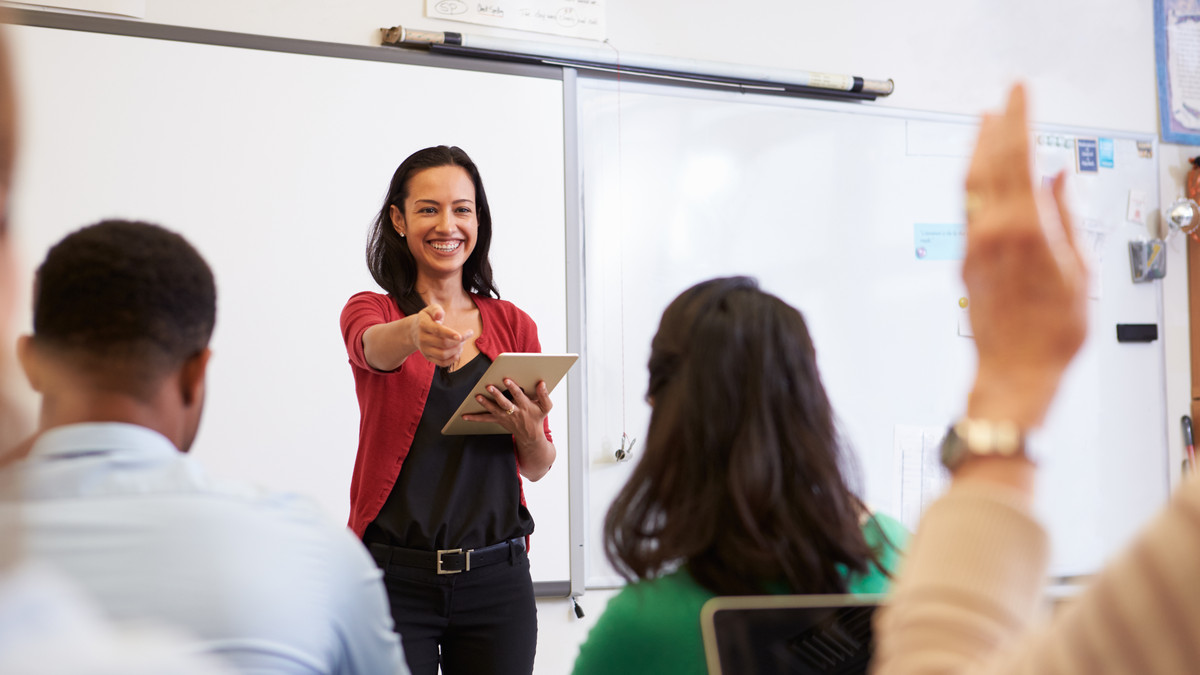Step into any K-12 classroom and chances are the students will at one point during the day be engaged with technology using a computer, tablet or other device.
Yet those who lead these classroom activities often are the first to admit they haven’t a clue how to integrate digital tools in a way that effectively promotes learning.
A new online certification program from the University of Michigan School of Education, developed in partnership with the U-M Center for Academic Innovation, offers current K-12 teachers, technology coaches and administrators the opportunity to learn how to effectively integrate technology into classroom teaching so that it adds value to learning.
The Advanced Educational Technologies Certificate Program, led by Liz Kolb, clinical associate professor of education technologies, doesn’t teach teachers how to use specific tech tools; it focuses on the pedagogy behind effectively using technology in the classroom — a big difference from most other training programs, she says.
“Teachers are not trained to teach with educational technology. They have limited time to access and review the research. Many tend to trust the ed-tech companies to tell them what to do,” Kolb said. “My passion is helping teachers, administrators and tech coaches understand the research that informs how we should be managing and using tech in the classroom.”
The semester-long certification, launched as a pilot this month with 18 people from across the United States representing those three K-12 positions (plus a few U-M students), is believed to be the first time a group of teachers and those who manage and support them have come together in a course to talk about successful integration of technology into the classroom.
Read the whitepaper: Connecting Devices for Visual Learning in the Classroom
Learn how to easily flow content around classrooms with a simple display solution. Download today.
There may not be a computer in school for every child, but those who report national statistics on technology in education say there are computers available now in most schools. Groups like the EducationSuperHighway say the fiber network is 99% complete as well, translating into more than 46 million children at schools that are connected to the internet.
Yet there is a gap in what administrators, tech coaches and teachers say about how prepared teachers are to use tech in classes, and many flat-out admit they don’t know how to do it, Kolb said.
She and colleagues conducted a recent survey of 600 K-12 teachers across the U.S. and found a group that was not confident they knew how to use technology in meaningful ways with their students. The eMINTS U.S. Department of Education Office of Technology survey showed less than 50% felt prepared to both manage and teach with technology, 60% thought they were unprepared to meet student needs, and only 40% were confident enough to select appropriate technology tools.
Kolb said 67% were unprepared for the legal, citizenship and privacy aspects of teaching tech, and only 52% felt their administrators were prepared to effectively evaluate their teaching around technology.
The administrators were less confident in teachers’ abilities, with almost 80% of them indicating teachers were unprepared.
“We really are trying to make it meaningful and personal to what they are doing, so that the teachers can work with what they have (technology wise),” Kolb said. “We hope the certification will become a model so other schools and colleges will want to take on this work.”
The program is a blended learning experience featuring synchronous live meetings with asynchronous work in between, Kolb said. It was created using International Society for Technology in Education standards for the use of technology in teaching and learning.
The standards not only establish guidelines for teachers but also expectations of students, such as being good digital citizens, global collaborators and empowered learners. The teachers are expected to lead the students in these pursuits by themselves being good digital citizens, and by understanding the digital age and knowing the technology, among others.
At the end of the course, participants earn an official U-M Advanced Education Technology Certificate and 45 hours of the State of Michigan Continuing Education Clock Hour credit. The also become affiliated with the U-M Global Community and Network.
The program will accept new participants in fall 2020.
This article was from Targeted News Service and was legally licensed through the NewsCred publisher network. Please direct all licensing questions to legal@newscred.com.
